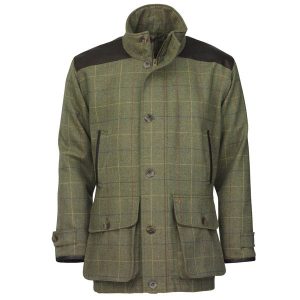Understanding the ratings for waterproof and breathable jackets
A jacket is usually your first line of defence against whatever the weather is throwing at you. And depending on what you are doing, how waterproof it is becomes an important factor. There are so many makes, styles, colours and fabrics from which to choose. This is great for variety but can make the choice seem overwhelming. So if you’re looking for a new jacket to tackle the open seas, spend a day shooting or to just walk the family dog, it’s crucial you know exactly what protection you need and can understand the ratings for waterproof and breathable jackets.
Ratings
Official ratings for waterproof and breathable jackets are given to the various fabrics used by the multitude of coat manufacturers out there to certify their level of waterproofing. Understanding these ratings will give you an idea of the kind of jacket you need.
A fabric’s waterproof rating depends on how much water can be left on it for a certain amount of time.
This is all done under strict scientific conditions which simulate both rainfall and atmospheric pressure and is a great guide for everyone from the serious sailor, to the field sports enthusiasts or anyone who has to spend time outdoors in all weathers.

Not all waterproof and breathable jackets need to look like the Musto HPX Gore-Tex Pro Series Smock
A Pro Series jacket from Musto, for example, could have a Water Head Rating as much as 28,000mm, meaning it can withstand 28 metres of water in a tube resting on the material before it starts to let the water through. A lighter inshore jacket might have a rating of 5,000mm, meaning it can hold up to a 5-metre column before water ingress starts. However it is still waterproof and works perfectly well for a day in poor weather conditions.
But to be incredibly waterproof, a jacket doesn’t have to look like it’s just for a round-the-world yachtsman. There are also some beautifully crafted tweed shooting coats that combine traditional tailoring, the finest Scottish Tweed and state-of-the-art membranes, resulting in amazing items such as those in the Laksen range. These extremely smart jackets, ready for action in the field or in town, are a true blend of form and function.

The Laksen range includes some beautiful waterproof jackets.
Breathable is best
Along with being waterproof, a jacket’s ability to breathe is equally as important. Your jacket may be keeping the rain off you, but if the material isn’t breathable, and you are wearing the jacket while active, the moisture vapour generated by your body during activity won’t be able to escape quickly enough. It will condense inside your jacket and cause you to get wet from within.
Thus, the breathability of a jacket is a measure of how quickly moisture from your body can pass through your jacket.
Ratings for an item’s breathability can appear confusing at first as there are a few different ways of rating a material’s breathability and different manufacturers use different methods.
The science
One way of measuring breathability is to find the Moisture Vapour Permeability (MVP) or Moisture Vapour Transmission (MVT) rates. This is the the amount of water vapour that can pass through a square meter of fabric over 24 hours.
A rating of more than 8,000g/m2/24 hours will give you a good level of breathability for general outdoor use, while 20,000g/m2/24 hours and over will give you a great level of breathability for more active use. The best level of breathability begins at 30,000g/m2/24 hours – fantastic if you are planning on sustained, high aerobic activity in your jacket.
Another thing to look out for when choosing breathable jackets is its Resistance to Evaporative Heat Loss – or RET. In this case, the lower the number the more breathable the material.
So, a jacket with a RET of less than 9 will have good breathability and be ideal for general outdoor use. Less than 6 and it will be great for more active use. A rating of 4 and under will give you the very best breathability for sustained levels of high activity.
The level of scientific research and development that goes into just one layer of fabric in your coat is staggering. Each layer of fabric that makes up your waterproof jacket will have years of development behind it.
A waterproof jacket can be constructed from up to five layers. The top layer will be a waterproofed abrasion-resistant outer shell, with a protection layer between it and a waterproof membrane. This membrane is highly water resistant but also incredibly breathable. Another protective layer is then added before the final layer. There is often a soft breathable inner liner that sits next to your clothing or skin.
Venting
But breathability doesn’t have to be so hi-tech. Another element of the jacket’s design to look at is venting – seal-able holes in your outerwear.
This is another great way to let your coat and body breathe while staying protected from the elements. Look for seal-able vents, vented pockets and other venting solutions.
So the next jacket you buy, keep an eye on those numbers and make sure the coat’s right for you.

